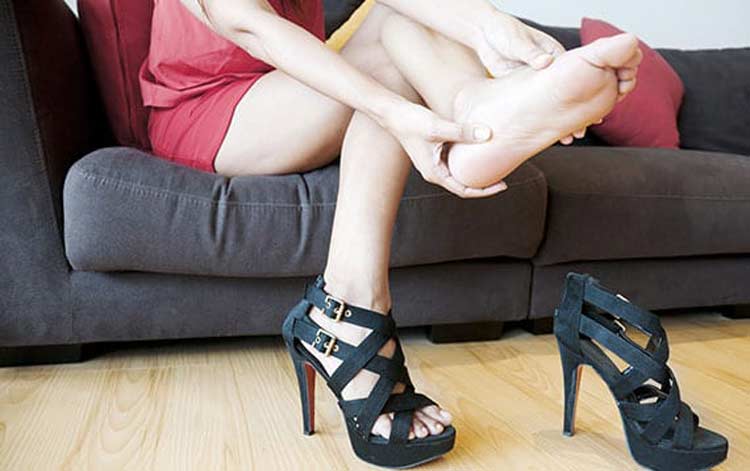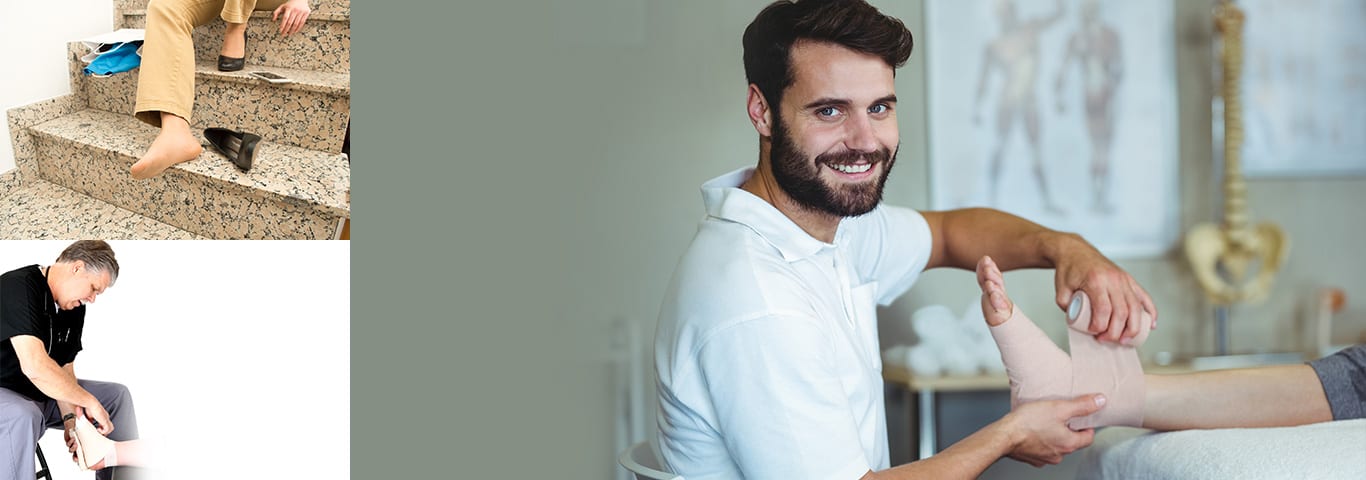
Discover how we can help you find relief from Lisfranc injury.
Lisfranc joint injuries are located in the midfoot, and can involve bones, ligaments or a combination of both.
- The injury can be very minor or complex.
- The treatment required will depend on the severity of the injury.
Symptoms
Often mistaken for a sprain, Lisfranc injuries are more complex than that. Symptoms of a Lisfranc injury include swelling on the top of the foot, bruising on the top and bottom of foot, pain that becomes worse when you push off the affected foot, and the inability to bear weight on the affected leg.
Causes
There are a variety of things that can lead to a Lisfranc injury. A simple fall or trip can lead to damage, particularly if you stumble over the top of your foot, bending it downward. Lisfranc injuries can also result from twisting motions while playing sports such as soccer or football. The most severe types of injuries often occur as a result of falling from height. This type of injury can lead to broken bones in the midfoot as well as dislocations of the joint.


Diagnosis
Diagnosis will involve a physical exam as well as imaging. The physical exam involves inspection of swelling and bruising, and motion and stability tests. To perform the motion and stability tests, your physician will hold one part of the foot with one hand and manipulate the area with the other. This allows him to check for displacement and instability.
Imaging tests involve a variety of views to determine which bones and joints are involved. If the non-weight bearing x-rays are inconclusive, your physician may request weight bearing x-rays to get a better look at how the area looks under stress. Your doctor may also request a CT scan to plan the best treatment option and an MRI, which will show ligament damage.
Treatment Options
There are a variety of treatment options available for Lisfranc injuries. The right treatment depends on your lifestyle and the severity of the injury. In the cases of a minor injury, treatment is the same as for a sprain. Rest the foot, elevate it, and apply ice. If this treatment doesn’t relieve the pain and swelling, it is important to seek medical treatment. The quicker you receive proper treatment, the quicker the healing process can begin.
Nonsurgical treatment for Lisfranc injuries involve wearing a non-weight bearing cast or boot for six weeks. It is important that you are diligent about not putting weight on the affected foot or you will slow healing. After about six weeks, you should be ready to switch to a removable cast boot or an orthotic to wear in your shoe. Nonsurgical treatment is a good option if there are no tears in the ligaments, broken bones, or dislocations in the joint.
If there are fractures in the midjoint area or there is dislocation, a surgical option is the recommended treatment. There are two types of surgical treatment, internal fixation and fusion. The extent of the injury depends on the best surgical solution.
In internal fixation, the bones are reduced, or properly placed, and then secured with plates and screws. These plates and screws may be kept in place permanently or removed three to five months after surgery. You should not resume impact sports, such as running, until the plates and screws are removed. Arthritis may eventually develop from damage to cartilage around the joints, causing chronic pain. If this happens, your doctor may recommend additional treatment, such as a fusion surgery.
For severe injuries that involve damage that cannot be repaired through internal fixation, fusion surgery may be recommended. In fusion surgery, the damaged bones are fused together into one piece. There is little motion in the midfoot area, so this fusion process does not prevent you from having a normal gait.
After Surgery
The rehabilitation process following surgery typically involves wearing a non-weight bearing cast or boot for six to eight weeks. Your doctor will work with you to determine a rehabilitation program that transitions you from non-weight bearing to weight bearing and back to your previous level of activity.
In rare cases, the bones may not heal properly. This is a rare complication, and how it is handled depends on the individual. Generally, it is necessary to perform additional revision surgery. If the original surgery was internal fixation, your physician may recommend a fusion procedure for the revision.

